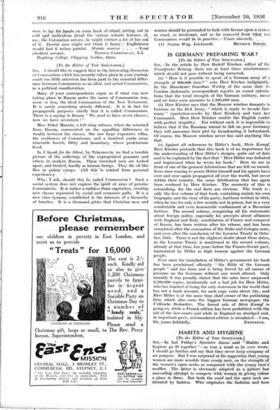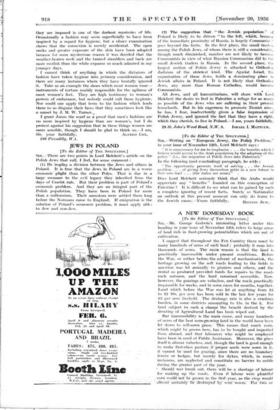HABITS AND HYGIENE [To the Editor of THE SPECTATOR.' last
Friday's Spectator Janus' said- "Ilabits and hygiene go ill together "—as true a word as ,he ever wrote. I should g-O further and say thathey, never keep company-of set purpose. But I-was surprised:it-his 'suggestion that young, women are more sensible than young men:, on the streUgth of . the women's open- necks as compared with-the -young men's muffler: The Bitter is obviously adopted" is a 'gallant but unavailing attempt to compete with worneiiii giving colour a place in dress. But both the scarf and the open neck are dictated by fashion. Who originates the fashions and how
they are imposed is one of the darkest mysteries of life. Occasionally a fashion may seem superficially to have been inspired by a regard for hygiene, but a closer examination shows that the connexion is merely accidental. The open necks and greater exposure of the skin have been adopted because for some mysterious reason it was decided that the weather-beaten neck and the tanned shoulders and back are more modish than the white expanse so much admired in my younger days.
I cannot think of anything in which the dictators of fashion have taken hygiene into printery consideration, and there are many instances where they have brutally ignored it. Take as an example the shoes which most women wear— instruments of torture mainly _responsible for the ugliness of inost women's feet. They are high testimony to woman's powers of endurance, but nobody could call them hygienic. Nor could one apply that term to the fashion which leads them to so disguise their faces that they sometimes look like a sunset by J. M. W. Turner..
I grant Janus the scarf as a proof that men's fashions are no more inspired by hygiene than are women's, but I do protest against his suggestion that in these things women are more sensible, though I should be glad to think so.—I am,





























































 Previous page
Previous page